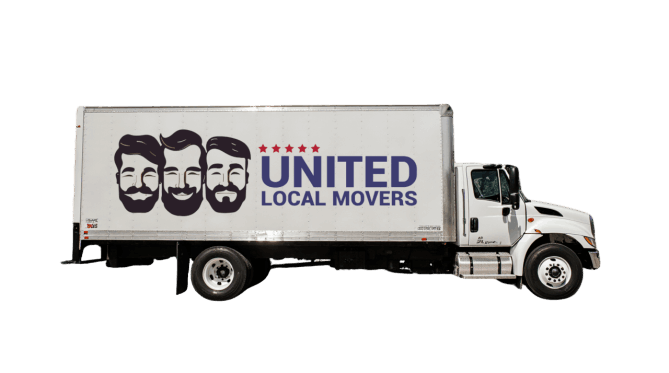Moving into or out of a building with a superintendent or doorman isn’t quite the same as moving into a standalone home. These buildings usually have rules, schedules, and approval procedures that need to be followed. Whether you’re relocating to a high-rise in New York or a condo with strict HOA policies, understanding how to work with building staff is crucial for a smooth, stress-free move.
In this guide, we’ll walk through exactly how to communicate with building supers and doormen, what permissions to secure, and how to coordinate with your moving company to keep everything on track.
Why Building Coordination Matters
Most large apartment buildings have policies that directly affect your move. If you don’t follow them, you can end up with:
- 🚫 Delayed or denied access on moving day
- 💰 Fines for improper elevator use or truck parking
- 🏢 Conflicts with other residents or management
- 🚛 Longer (and more expensive) move times
Clear communication with the building super and doorman ensures your movers can do their job efficiently.
Step 1: Understand Building Rules in Advance
Every building has its own moving procedures. A few weeks before your move, ask the building super or management for a copy of the move-in/move-out policies. These typically cover:
- 📅 Approved moving dates and times
- 🚪 Access points and freight elevator use
- 🚛 Truck parking and loading restrictions
- 💰 Required insurance certificates (COI)
- 📝 Security deposits or move-in fees
Many buildings only allow moves on weekdays during business hours, so plan accordingly.
Step 2: Reserve the Freight Elevator Early
One of the most common issues on moving day is elevator availability. If your building has a freight elevator, it must be reserved in advance.
- 📆 Book your slot at least 2–4 weeks before your move
- ⏳ Ask about maximum reservation duration
- 🚛 Coordinate with your movers to match their schedule
- 📋 Get written confirmation from the building
Without a reservation, you risk competing with other residents or being forced to reschedule your move entirely.
Step 3: Provide Your Mover’s Insurance Certificate (COI)
Many buildings — especially in big cities — require a Certificate of Insurance (COI) from your moving company. This protects the building in case of accidental damage during the move.
- 🏢 Request COI requirements from the building
- 📄 Forward them to your moving company
- ✍️ Ensure the building is listed as “additionally insured”
- 🕒 Submit the COI several days before the move
United Local Movers provides COIs quickly and accurately to comply with most building requirements nationwide.
Step 4: Coordinate Access with the Doorman
Doormen are often your first point of contact on moving day. A friendly, respectful approach goes a long way. Let them know:
- 📅 Your scheduled moving day and time
- 🚛 What truck or company to expect
- 📦 Where boxes and furniture will be moving through
- 🚪 If you need them to unlock service doors or hold elevators
Establishing rapport with the doorman can help resolve any unexpected issues quickly.
Step 5: Plan for Parking and Access
Most buildings — especially in dense urban areas — have limited loading space. Work with the building super and your moving company to plan:
- 🚛 Where the truck will park
- 🚧 Whether a parking permit or loading zone is required
- 🕒 How long the truck can remain on-site
- 🚨 Backup plans in case the space is blocked
Securing this in advance prevents movers from wasting time circling the block — or worse, getting ticketed.
Step 6: Know the Security Procedures
Some buildings require movers to sign in, wear visitor badges, or use specific entrances. Be prepared to:
- 🪪 Provide ID or reservation confirmation
- 🚪 Use service entrances rather than the main lobby
- 🔐 Comply with access control rules (fobs, codes, etc.)
- 🕒 Notify security if your move runs long
Understanding these details ahead of time saves everyone time on moving day.
Step 7: Protect Common Areas
Building supers care about protecting the property during moves. To avoid fines or complaints:
- 🧼 Cover floors with protective runners
- 🪜 Pad elevator walls
- 📦 Keep hallways clear of debris
- 🚫 Avoid dragging furniture across surfaces
Many buildings will even provide floor protection materials — ask in advance.
Step 8: Communicate Delays or Schedule Changes
Things happen: traffic jams, weather delays, or last-minute changes. If your movers are running behind, notify the building super and doorman as soon as possible. This allows them to:
- 🔄 Adjust elevator schedules
- 📅 Reschedule access windows
- 🚪 Coordinate with security
- 🧭 Prevent conflict with other tenants’ moves
Clear communication builds trust and avoids unnecessary tension on moving day.
Step 9: Consider Building Tips and Etiquette
It may not be required, but good etiquette goes a long way:
- 🤝 Thank the doorman or super for their help
- 💵 Offer a tip if they provided extra assistance
- 📋 Leave the service areas clean after the move
- 📝 Follow any building feedback for future moves
These small gestures can make future interactions smoother — especially if you’re moving out of a rental or into a co-op or condo with strict rules.
Step 10: Work with Movers Experienced in Building Regulations
Not all moving companies are familiar with building protocols. Choosing movers who have experience with urban relocations — like United Local Movers — ensures:
- 📄 COI compliance
- 🚛 Elevator scheduling coordination
- 📋 Professional handling in tight spaces
- 🕒 On-time arrival and efficiency
These details make a major difference in how smooth your moving day feels.
Step 11: Document Everything
It’s a smart move to keep a record of your building coordination in case of disputes:
- 📧 Save all emails and confirmation messages
- 📸 Take photos of building areas before and after the move
- 📝 Note down elevator reservation times
- 🧾 Keep a copy of your COI and any permits
Good documentation protects you from unexpected charges or claims later.
Step 12: Smooth Moves Start with Good Communication
Working with building supers and doormen isn’t complicated — it just requires respect, planning, and communication. By coordinating in advance, following building rules, and working with a professional moving team, you can avoid headaches and enjoy a smooth relocation experience.
With United Local Movers, your relocation becomes safer, faster, and stress-free — from lobby to loading dock.





